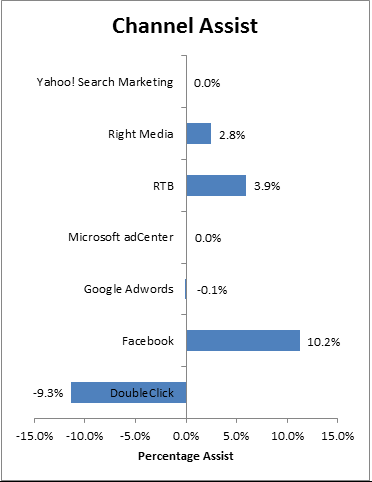How To Effectively Use Attribution With Complex Campaigns
As marketers, we think that attribution is important. However, despite all the talk in white papers, blogs, etc., little has been discussed about its effective use. For instance: is attribution always useful, what are the common attribution techniques, which is the best attribution model, what improvements in efficiency can one expect from the right attribution […]
As marketers, we think that attribution is important. However, despite all the talk in white papers, blogs, etc., little has been discussed about its effective use.
For instance: is attribution always useful, what are the common attribution techniques, which is the best attribution model, what improvements in efficiency can one expect from the right attribution techniques? In this column, I shall attempt to answer some of these pressing questions.
Question 1: When To Invest In Attribution?
Many advertisers want to investigate cross-channel effects with multi-channel attribution. However, they use one tracking system for search, one for display and a third for email marketing.
These systems are often not compatible with each other, and it is often very difficult, if not impossible, to combine data for multi-event funnel analysis. It is, as they say in Cantonese, “Like a chicken talking to a duck.”
The first step, then, is to make sure you have a system that can track across all channels – search, display, SEO, social, etc. It is only then that one can apply an attribution rule. In the absence of a unified tracking system, attribution becomes difficult, and one has to resort to econometric techniques that are time consuming and labor intensive.
Still, even when you have a good tracking system in place, it might not be worth your time investing in multi-click attribution analysis. Consider the following examples:
Image 1
In the first example, 88% of funnels are single-click funnels. Hence, any multi-click attribution rule will only affect 12% of the funnels. The overall impact would be minimal. In the second example, 42% of the funnels are multi-click.
Hence, these attribution rule changes would have a significant impact on how revenue is measured and how keywords, campaigns and channels are optimized. As a general rule of thumb, I suggest that for any business where over 15% of the funnels are multi-click attribution, rules should be considered.
Question 2: Which Is The Best Attribution Rule?
There are several “generic” attribution rules available in attribution platforms – first click, last click, even weights, last more, parabolic, etc. I have shown these graphically below. Is there a method that ensures the “best” media mix? No.
In fact, any claim of a best method should be treated with suspicion. I have stated before, rules based attribution are not the optimum solution for the media mix problem.
However, from the point-of-view of campaign management and insight generation, especially regarding search, there are some factors to be considered.
First, when moving from last click, several keywords (typically brand keywords) which seem to generate high ROI will appear to generate a lower ROI with other attribution methods. This can be unnerving to management.
In these cases, a more phased approach for going from, say, last to first, or last to even, is to use a weight last more attribution. Second, a benefit of even distribution is that revenue can be attributed to more keywords that, in turn, encourage us to bid them to higher positions. Thus, keywords that are assisting and have been bid down because of their seemingly bad ROI would get a greater opportunity.
In the example below, changing the attribution rule from last to even distributes more revenue to keywords at lower positions. Hence, they would have a higher ROI in the new rule and would be bid higher.
 |
| Gainers and Losers with attribution rule change: In this example by moving from last click to first click, keywords at lower position would get more attributable revenue while those at higher positions would get less revenue. As a result, bidding with even click would encourage longer tail keywords. |
Question 3: Which Attribution Rule Will Get Me The Right Media Mix?
As I mentioned before, rules based attribution are not the best solution for answering the media mix question. For one, attribution reallocates revenue (or any other response metric) to events that happened in the past, based on a certain way of counting revenue. It cannot answer what would have happened had you changed the counting system (say from last to first click).
Secondly, for most enterprise level marketers, the bulk of the budgets are spent offline in TV, print, etc. Factoring these channels in the media mix question requires econometric methods coupled with a statistical attribution approach.
So, are rules based attribution rules irrelevant for media mix questions? Not quite. They indicate where allocation of budget should be shifted. In the example below, we calculated revenue by even distribution and then by last click and quantified the assist effect as
If the Assist is positive, the channel is assisting, if negative, the channel is assisted. Positive assists should get more budget and negative assists, less budget. Note that the exact budget cannot be determined with this method. At best, we only have a partial directional answer to the media mix question.
For most enterprise search marketers, attribution will be increasingly important in the coming years. However, amidst these conversations, and numerous claims made by their proponents, it is important to know what commonly used attribution techniques can and cannot do. I hope these examples gave you a deeper understanding of this often-misunderstood subject.
Contributing authors are invited to create content for Search Engine Land and are chosen for their expertise and contribution to the search community. Our contributors work under the oversight of the editorial staff and contributions are checked for quality and relevance to our readers. The opinions they express are their own.
Related stories


